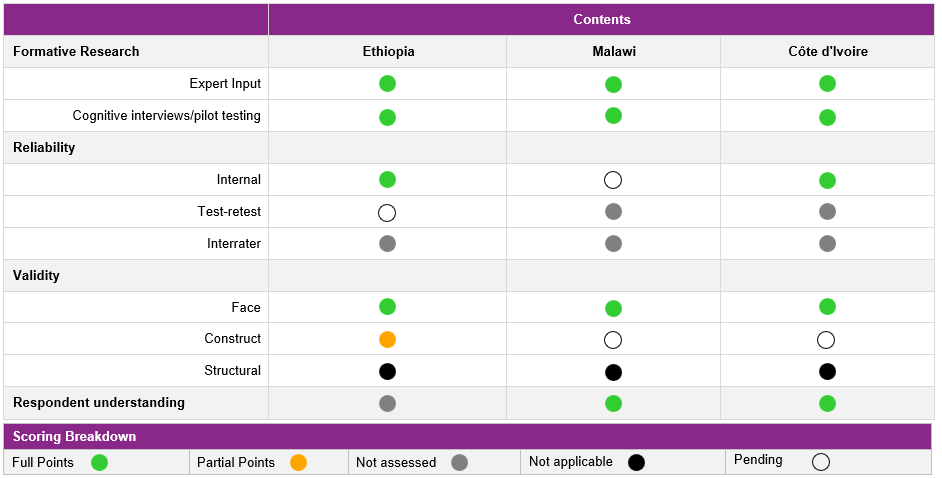Global patterns in time use demonstrate the existence of substantial gender disparities. On average, women spend substantially more time than men on unpaid care and domestic work, and as a result, have a higher total work burden than men. For many development programs, reducing women’s work burden is viewed as an important step toward empowering women. Yet, the amount of time women spend on different activities—as measured by standard time-use measurement approaches—tells us little about the power they wield in negotiations and decisions over time allocation. This module measures individuals’ time-use agency, i.e., their ability to make and act upon strategic choices about how to allocate their time (Eissler et al. 2021). We recommend the use of this tool in the design, monitoring, and evaluation of development programs aimed at improving women’s empowerment.
Link to: tool content and guidelines, CTO file, and statistical annex
Permitted use of the tool: all users are free to use the tool with citation: “MAGNET (2023). Time-use Agency. http://magnet.ifpri.info/time-use-agency/”
Tool sample
Module A
Some people feel they have a great deal of influence over how they spend their time on a day-to-day basis. Others feel they have little influence over how they spend their time on a day-to-day basis (for example, if family members or their employers dictate this instead). Please listen to each statement and tell me if you completely agree, partly agree, neither agree nor disagree, partly disagree, or completely disagree
A1. I decide on my own how much total time to spend on childcare activities.
A2. I choose for myself what I do while engaging in childcare activities.
Module B
B1. During the last 7 days, did you spend time on childcare activities, even if for one hour?
- 1 = Yes
- 2 = No >> Proceed to next activity
B2. During the last 7 days, how much influence did you have over how much total time you spent doing childcare activities?
- 1 = No influence
- 2 = Low level of influence
- 3 = Medium level of influce
- 4 = High level of influence
B3. During the last 7 days, how much influence did you have over what you did while engaging in childcare activities?
- 1 = No influence
- 2 = Low level of influence
- 3 = Medium level of influce
- 4 = High level of influence
Measurement properties
- Geographies Tested: Ethiopia, Malawi, Côte d’Ivoire
- Populations included: Female, Male
- Age range: Adults
For details on these testing metrics, visit our scoring methodology page.

 International Food Policy Research Institute
International Food Policy Research Institute